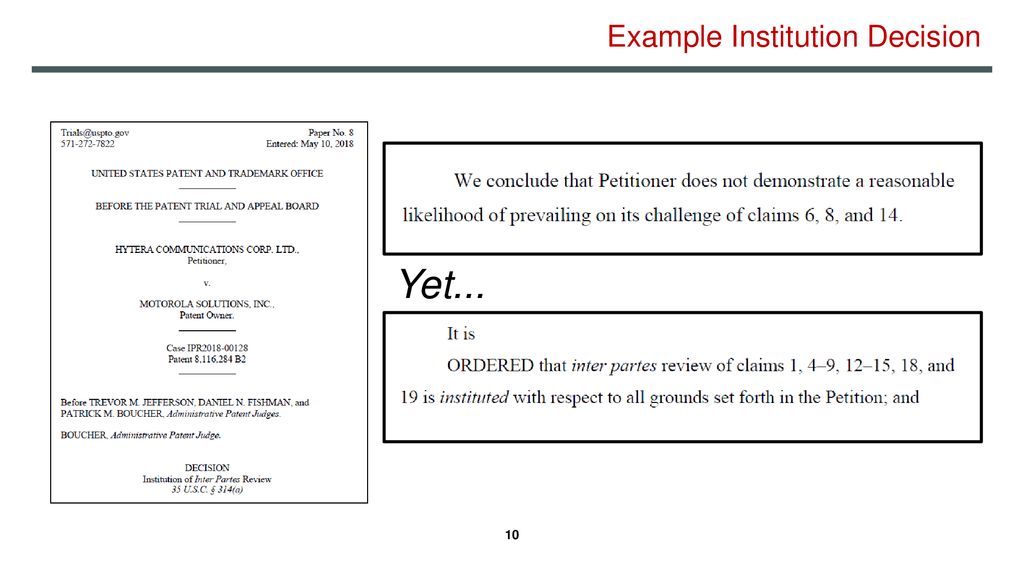The concept of an institution is something we encounter daily, though we may not always consciously recognize it. From the schools we attended to the governments that govern us, institutions shape our lives in profound ways. Imagine, for example, a child attending their first day of school. The classroom, the teacher, the curriculum – all these elements are the tangible manifestation of an institution designed to nurture knowledge and prepare them for the future. But what exactly are institutions, and what makes them such integral components of our social fabric?

Image: slideplayer.com
This article explores the multifaceted world of institutions, delving into their various forms, functions, and societal impact. We’ll examine different types of institutions, understand their historical context, and explore how they continue to evolve in response to changing societal needs. By understanding the core principles and dynamics of institutions, we can gain deeper insights into the complex tapestry of human society.
Defining Institutions: Building Blocks of Society
At its core, an institution refers to a stable and enduring pattern of social behavior. These patterns can encompass anything from established rules and procedures to deeply ingrained social norms. Institutions are more than just structures – they represent the collective values, beliefs, and practices that guide our interactions and dictate societal order. Imagine, for instance, the institution of marriage. It’s not just about a legal agreement; it’s also about a set of expectations, rituals, and shared understandings about relationships, family dynamics, and societal roles.
Types of Institutions: A Diverse Landscape
Institutions manifest themselves in diverse forms, each playing a distinct role in society. Here are some prominent examples:
- Political Institutions: These are structures like governments, political parties, and legal systems that govern the political life of a society. They establish the rules for power allocation, decision-making, and conflict resolution.
- Economic Institutions: These encompass systems like markets, banks, and corporations that drive the production, distribution, and consumption of goods and services within a society. They shape how resources are allocated and how wealth is created.
- Social Institutions: These include groups like families, religious organizations, and educational institutions that shape our social interactions, values, and beliefs. They teach us societal norms, foster a sense of community, and provide support networks.
- Cultural Institutions: These encompass museums, libraries, theaters, and other organizations that preserve and disseminate cultural heritage. They contribute to shaping our understanding of the past, present, and future, and play a crucial role in promoting artistic expression and intellectual discourse.
The Evolution of Institutions: Adapting to Change
Institutions are not static. They change and adapt in response to evolving societal needs and challenges. Throughout history, we’ve seen institutions transform as a result of technological advancements, social movements, and economic shifts. Consider, for example, the revolution in communication technologies. The internet and social media have profoundly impacted the way we share information, form communities, and even conduct business. These developments have also led to the emergence of new institutions, such as online platforms for social networking and e-commerce.

Image: www.vecteezy.com
The Future of Institutions: Embracing New Realities
The rapid pace of technological innovation, coupled with increasing globalization and societal complexity, continues to shape the trajectory of institutions. We are witnessing the rise of new forms of institutions, driven by technological advancements, changing societal values, and globalization. For instance, the rise of online education platforms is challenging traditional education models. Moreover, the increasing global interconnectedness is leading to the emergence of transnational institutions, such as international organizations and global NGOs, that address issues of shared concern.
Understanding and Engaging with Institutions
Understanding institutions is crucial for making informed decisions about our own lives, navigating societal challenges, and shaping the future. By recognizing the influence of institutions on our daily lives, we can actively engage with them, advocate for change, and contribute to building a more just and equitable society.
Engaging with Institutions: Making a Difference
There are numerous ways to engage with institutions and influence their direction. We can:
- Participate in democratic processes: Voting, lobbying, and engaging in civic discourse are critical for shaping government policies and holding institutions accountable.
- Support and contribute to civil society organizations: NGOs, charities, and community groups working in various fields play a vital role in raising awareness, advocating for change, and providing essential services.
- Advocate for reforms: Identifying and addressing systemic issues within institutions, be it through education, public discourse, or activism, can help promote progress and positive change.
FAQs about Institutions
Q: What is the difference between a formal and an informal institution?
A: Formal institutions are codified rules and structures with explicit regulations and enforcement mechanisms. Examples include governments, courts, and corporations. Informal institutions are unwritten norms, customs, and values that shape social behavior. Examples include social etiquette, religious teachings, and cultural traditions.
Q: Can institutions be both beneficial and harmful?
A: Yes, institutions can be both beneficial and harmful. While institutions provide order and structure to society, they can also be used to perpetuate injustice, inequality, and discrimination. For example, while education institutions are meant to empower individuals, they can also perpetuate socioeconomic disparities. It’s crucial to critically analyze and challenge institutions that perpetuate harm.
Q: Do institutions ever evolve or change?
A: Yes, institutions are dynamic. They constantly evolve in response to societal transformations, technological advancements, changing values, and the actions of individuals and groups.
Example Of An Institution
Conclusion
Institutions are the building blocks of our societies, shaping our interactions, beliefs, and values. Understanding their diverse forms, functions, and evolving nature is crucial for navigating complexities, promoting positive change, and shaping a better future. From political institutions governing our nations to cultural organizations fostering artistic expression, each institution contributes to the tapestry of human society. By recognizing the influence of these structures and actively engaging with them, we can strive for a more equitable, just, and progressive world.
Are you interested in learning more about specific institutions or how they impact your own life? Share your thoughts and questions in the comments below!






